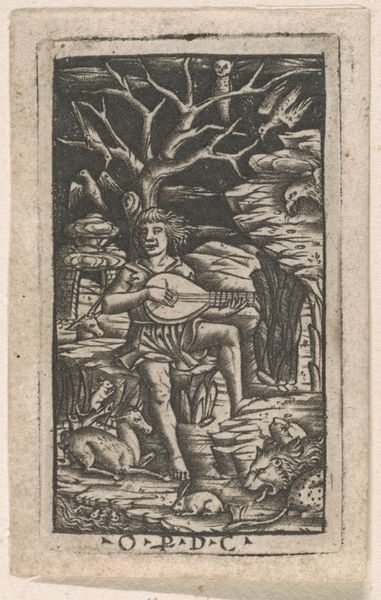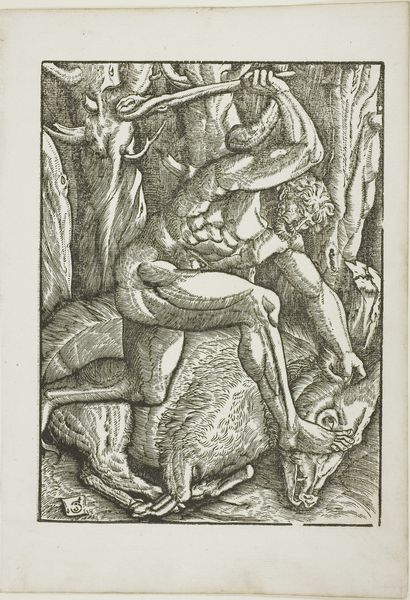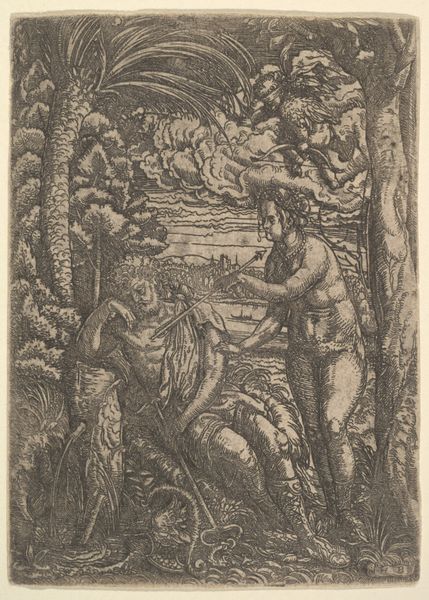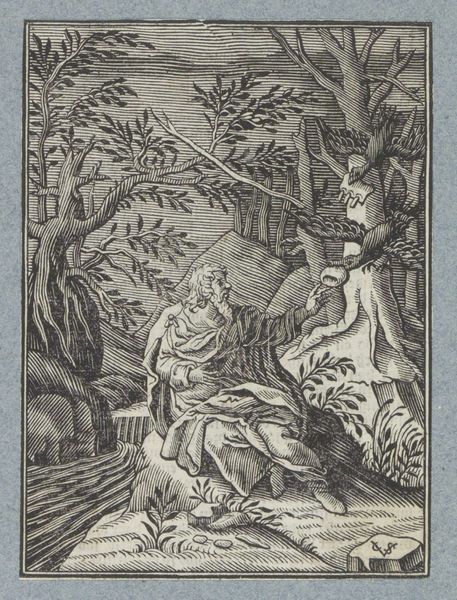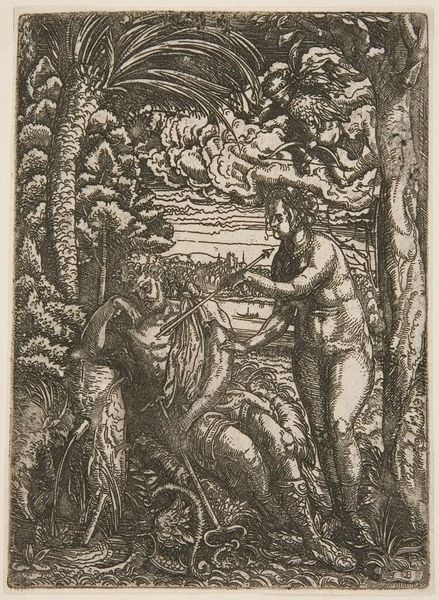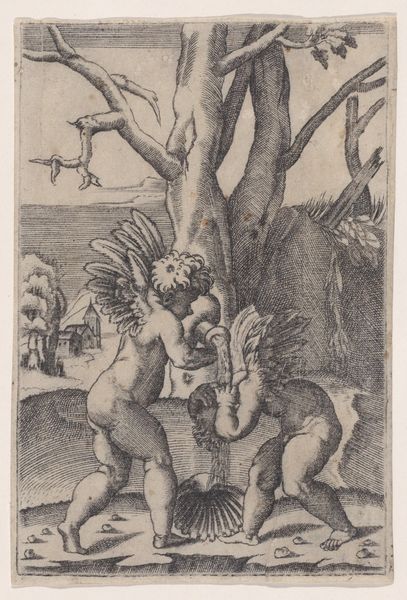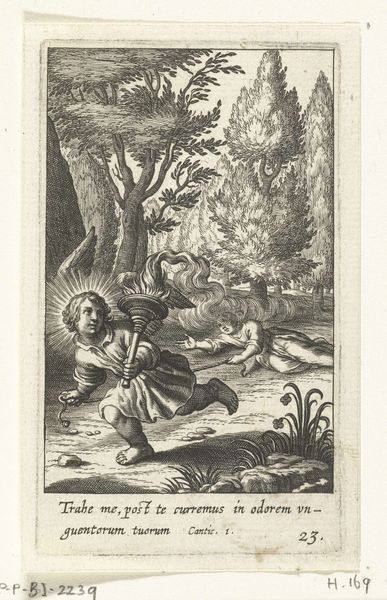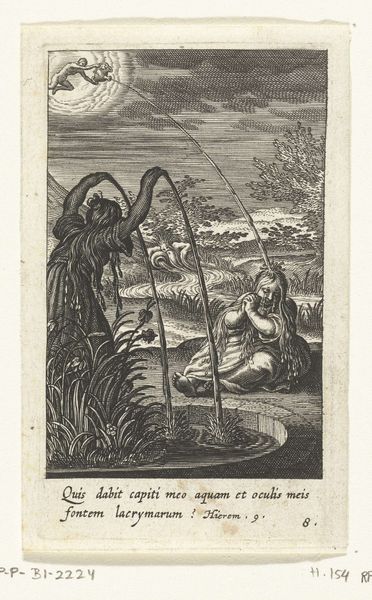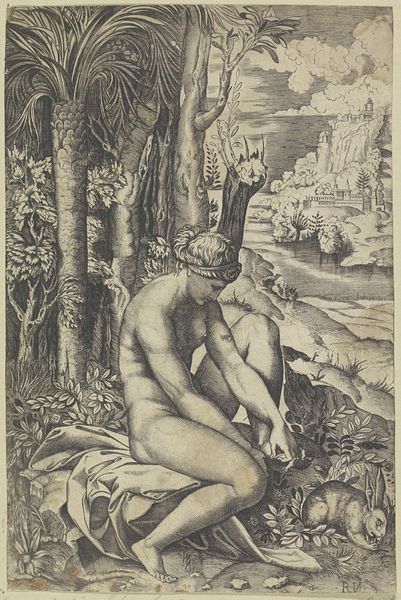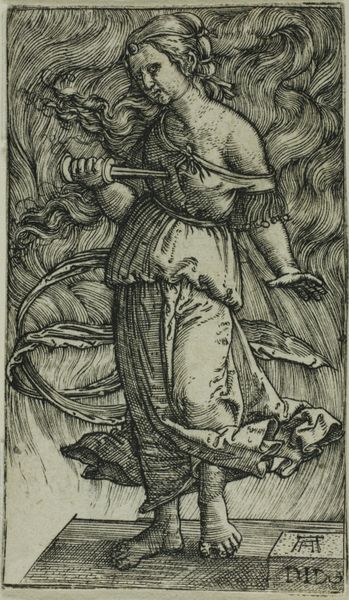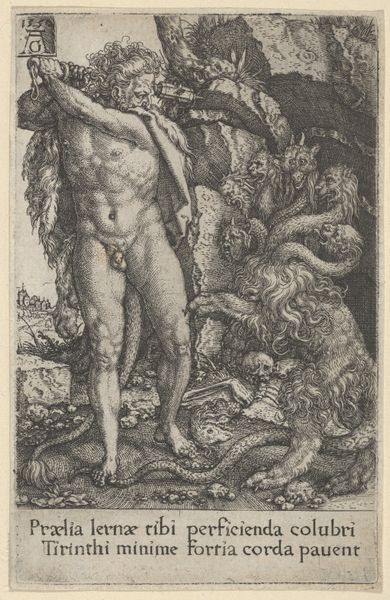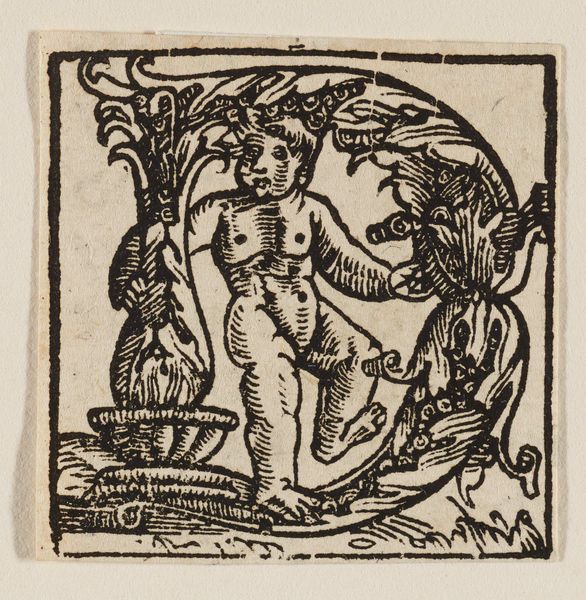
drawing, print, paper, engraving
#
drawing
#
medieval
#
narrative-art
#
ink painting
# print
#
landscape
#
figuration
#
paper
#
coloured pencil
#
genre-painting
#
northern-renaissance
#
engraving
Dimensions: 53 × 31 mm (plate); 55 × 34 mm (sheet)
Copyright: Public Domain
Editor: Here we have Peregrino da Cesena’s “Orpheus Charming the Animals,” an engraving from around 1490 to 1510. It’s so small and detailed; a real feast for the eyes. I am struck by how the animals are so casually gathered. How do you interpret the cultural relevance of this assembly? Curator: The image of Orpheus, enchanting animals with his music, speaks directly to the Renaissance understanding of harmony, not just in music, but in the cosmos. It taps into a widespread belief that music had the power to civilize and unite disparate elements. This print, likely circulated amongst elites, becomes a testament to their learnedness and appreciation of classical myth, subtly reinforcing social hierarchies through cultural capital. Editor: So it was a symbolic claim of knowledge and social positioning? That’s quite clever. Does the medium—a print rather than, say, a painting—change how that message was received? Curator: Absolutely. Printmaking enabled wider dissemination of this ideal, even though access was still somewhat limited. Consider this print as part of a broader movement – the rise of humanism and the rediscovery of classical learning. How do you think the landscape depicted plays into this narrative? Editor: The landscape feels…tamed, almost staged. Like the animals are actors on display. Curator: Exactly. It’s not a wild, uncontrolled space, but a backdrop affirming human intellect prevailing over nature, subtly broadcasting the patrons control of social spaces too. We must always be mindful of who produced, consumed, and controlled these images, as the print actively contributes to the social meaning in its moment. Editor: I see! It is never just a pretty image. It also reveals a worldview shaped by access and power. Curator: Precisely. And this impacts what we consider "art" even now, and who gets to decide that. Editor: Thanks! It helps me appreciate the context beyond just what’s depicted. Curator: My pleasure. Always question what stories art and institutions tell, and whose voices we aren’t hearing.
Comments
No comments
Be the first to comment and join the conversation on the ultimate creative platform.
